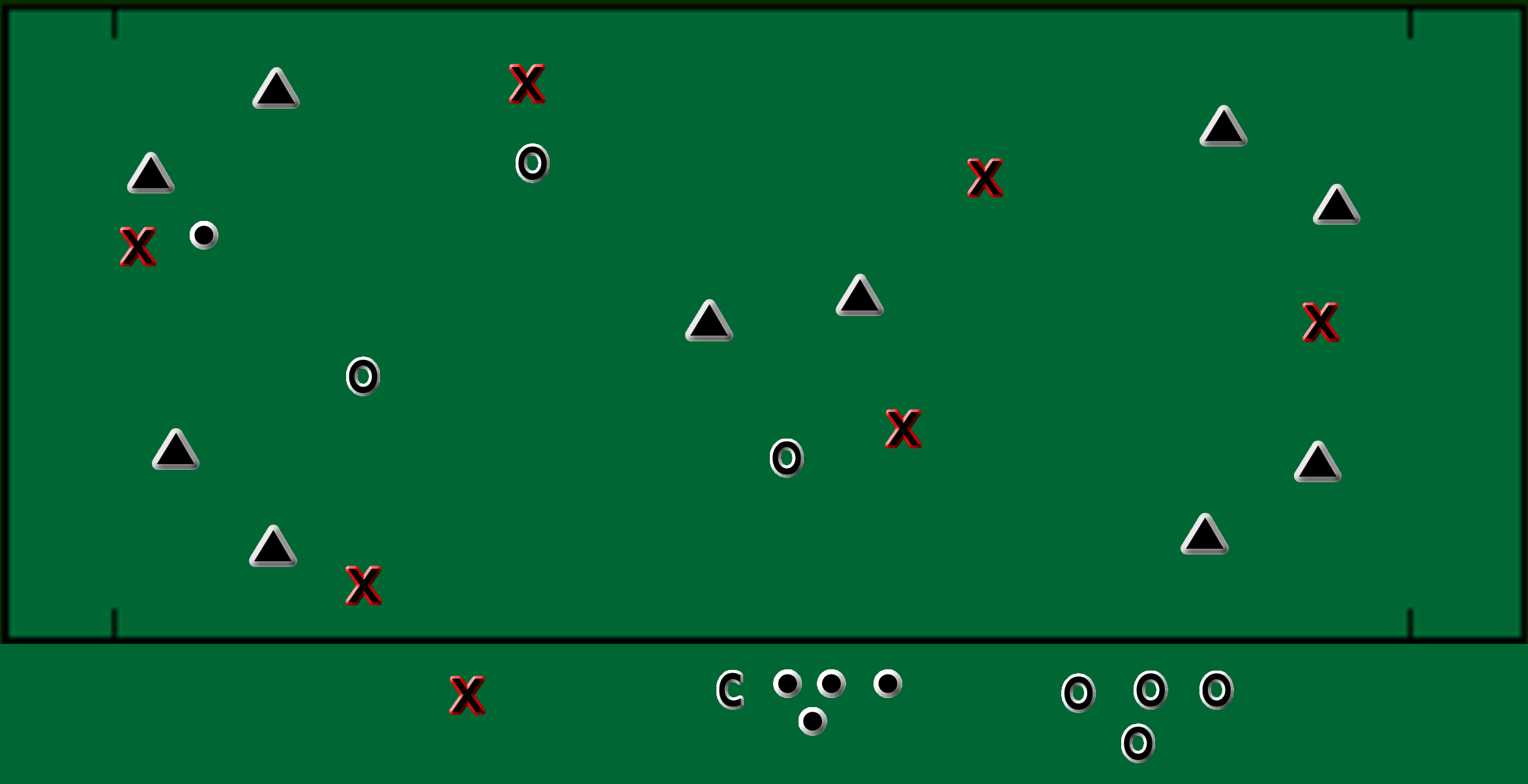AREAS OF THE GAME - POSSESSION SKILLS
Individual and Team possession skills are the building blocks of attacking hockey. At the introductory and earlier stages of development, field hockey is very much a transition game, with many changes of possession. However, as individual ball-control skills and passing/receiving skills develop with experience and practice, teams develop the ability hold possession for longer periods of time (even under pressure). Teaching these skills effectively in a progressive manner is critical to player development.
Possession Games
Small Games with numbers-up situations are a great way to build young players’ confidence with possession skills. [See section on possession games]. These games can be either multi-directional (many goals/gates to score through) or non-directional (no goals/gates). In both, the main focus is for a team to keep possession of the ball. The numbers in any specific possession game can be adjusted to allow for success at the specific level of play. For example, the 6v3 Possession Game (see diagram) can be played as a 6v2 game at the lower level, or 6v4 at a higher level.
Vision
The ball carrier and off-ball players must have awareness of where their teammates and opponents are positioned, and how they are moving. Visually “scanning the field” is critical, both for the ball carrier, and supporting players.
Space and Time
Once players have scanned the field, they must learn how to create space, move into space, and give themselves time to control and move the ball. These skills can be developed in practice using simple possession drills in a limited space. At the most basic level, the attacking team should look to pass the ball to a player in open space. The more space and time this attacking player has, the more likely that his team maintains possession.
(Drill example 5v0-1-2-3-4-5)
Importance of Off-ball Movement
Good movement from the off-ball attacking players is essential to maintaining team possession. At any moment, only one player has control of the ball, and that player has a lot to think about (especially if under pressure from an opponent), controlling the ball, trying to scan the field to see what passes or options are open. So the off-ball players should be working hard to give simple options to the ball carrier.
A key to watch for with your team: the off-ball players should be working harder and moving with more purpose than the ball carrier!
Possession Skills for LTHD Stages of Development
LEARNING TO TRAIN:
Skills: Push, Hit, Sweep, Reverse-Stick Hit/Sweep, Introduce Flick, Dribbling, Receiving, Leading
TRAINING TO TRAIN:
Develop LTT Skills, 3-D Dribbling Skills, Pull/Drag, Overhead/Aerial, Deceptive Passing, Reverse-Stick Receiving, Leading, Protecting the Ball
TRAINING TO COMPETE:
Aerials on the Move, Passing at Speed
TRAINING TO WIN:
Perfect all skills to date.

